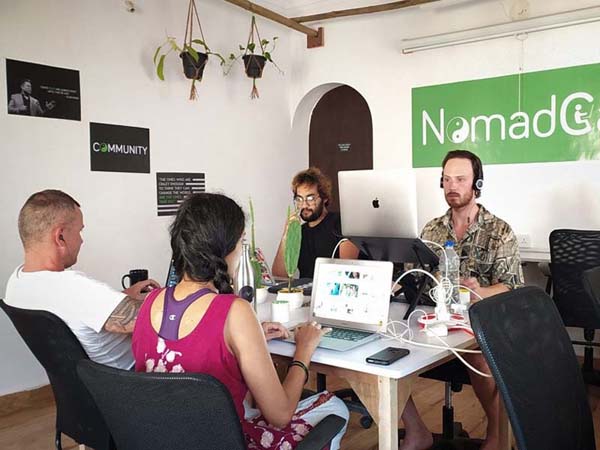
By Anand Parthasarathy
January 2, 2024: The peak Covid years brought to young millennials in India – those born in the 1980s and 90s –a new awareness: all they needed to continue earning a living was a laptop and a good Internet connection. And anywhere – not just at home.
The Digital Nomad was born – the location-independent professional who could meet the employer’s expectations from anywhere -- shared work spaces, coffee shops, food courts … and why not, from a villa on the beach?
The last option proved so attractive that young workers in their lakhs sought out an affordable shack or villa or cottage with self-catering facilities in a salubrious climate and took it on rent for a month or two – or six. It was a compelling proposition: work to your own timetable, break off when you felt the urge and switch to holiday mode.
Property owners fortunate enough to own suitable unused space in popular destinations from Kerala to Kullu, put them up on rentals on sites like Airbnb, MakeMyTrip, TripAdvisor, Expedia etc and generated additional income.
In fact India was being cited by many of these global operators as a favourite destination for the global digital nomad. One of the reasons is the Indian multi-entry e-tourist visa with durations of 30 days, one year, and five years, as long as the visitor exits and re-enters India every 90 days.
A result of these developments is the emergence of an alternative to traditional hotel—based holidays in India : the short term vacation rental.
A December 2023 study authored by Ronak Shah, Associate Vice President at Future Market Insights states that The global short term vacation rental market value is expected to rise from US$ 1,35,258.3 million in 2024 to US$ 3,77,191.2 million by 2034.
Specifically about India, the study finds that the short-term vacation rental market is anticipated to explode over the upcoming decade. The market is estimated to record a Compounded Annual Growth Rate or CAGR of 15.70% through 2034. “Millennials and digital nomads find these accommodations highly appealing. This is because short-term vacation rentals offer flexible and indulging experiences, suited to their requirements.”.
Writes Ronak: “Additionally, there is an emerging trend of staycations, especially among working professionals, who seek to be at leisure during their vacation.”
She adds: “Market participants are investing in new technologies and properties to attract customers to their sites. Key players are projected to find significant opportunities in India and China to expand their reach and gain higher profits.”
Goa was one of the first states to ride the short-stay rental wave and hundreds of heritage cottages and villas by the seaside are listed for renting in the new year at rates that start at Rs 5000/day and can go up to Rs 20,000/day. A good wireless broadband Internet system and adequate backup power are prerequisites.
Kerala is another destination with a plethora of well-appointed short-stay options emerging. Rentals tend to be cheaper than Goa -- a one bedroom fully furnished cottage in Kochi with a functional kitchen and air conditioning, that can sleep 3 persons, is advertised in Airbnb for around Rs 4000 / day. (Photo above). One can see the attraction this holds for family vacationers over pricier hotels.
Some entrepreneurs cater more directly to digital nomads: Mayur Sontakke, operates co-working and co-living spaces in Anjuna, Goa and in Dharamsala, Himachal Pradesh, under the brand NomadGao. His clientele includes many foreign visitors who are ready to pay $ 500 - 600 a month.
In what is emerging as a new and preferred holiday mode for many Indians, key players scramble to differentiate themselves by leveraging technology
MakeMyTrip partnered with Microsoft’s Azure OpenAI, a ChatGPT-like interface this year, to introduce voice-assisted booking in Indian languages.
Another Indian travel booking platform ixigo introduced a conversational travel assistant -- PLAN by ixigo -- an intelligent trip planner built on OpenAI which understands user preferences, offering them personalized recommendations, suggestions, and itineraries
As customers look to optimise the value they seek from their vacation spends, the traditional hospitality sector may face new challenges in 2024: Those who reinvent themselves will thrive, others may have to scramble to survive.
This has appeared in Swarajya